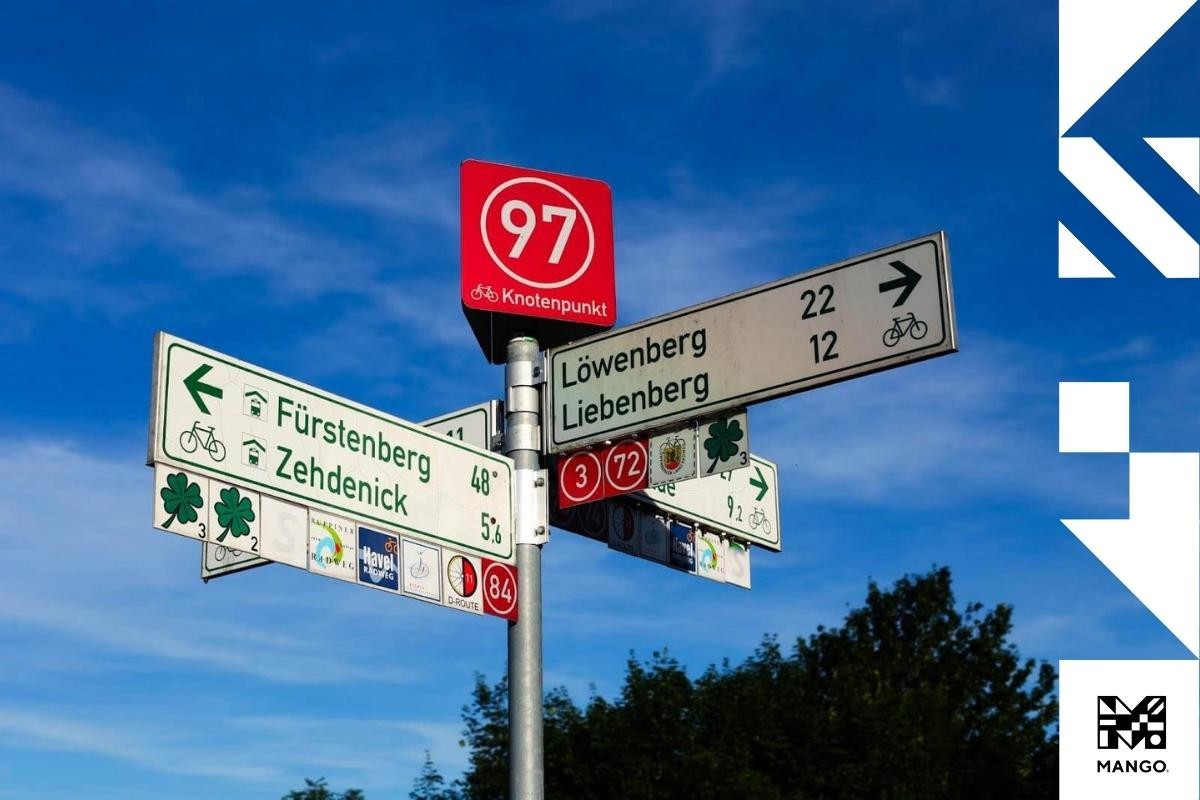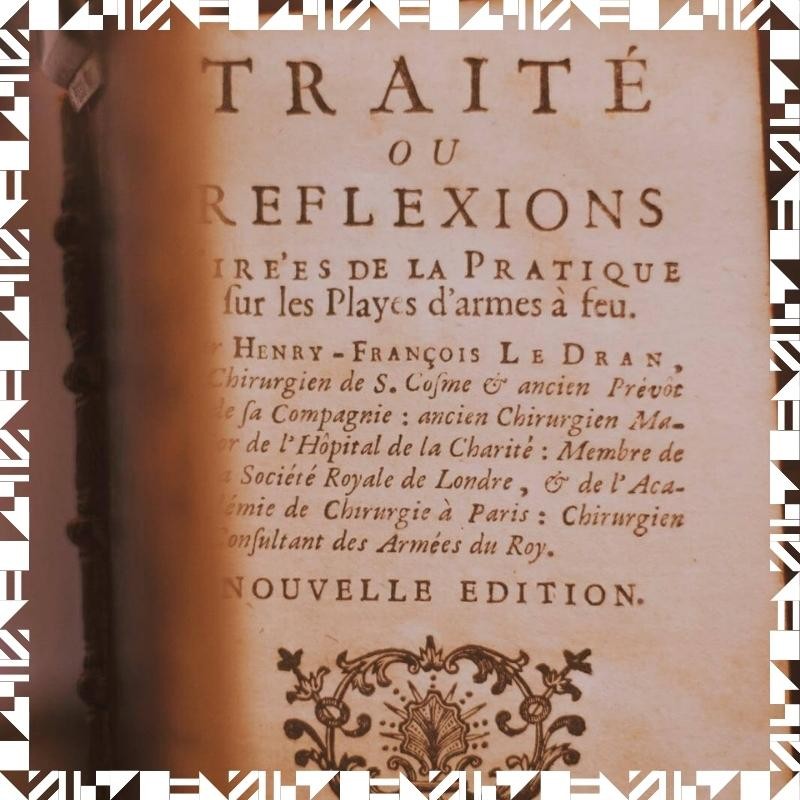Which Language Is Easy To Learn? Several languages offer an accessible path for English speakers, thanks to similarities in vocabulary, grammar, and pronunciation. Explore these options with LEARNS.EDU.VN, your premier resource for language learning. We can show you that achieving fluency is more accessible than you think. Unlock your linguistic potential and start your journey today! Let’s discuss some of the most accessible foreign languages, language acquisition and language proficiency for English speakers.
Table of Contents
- Dutch: A Germanic Cousin
- German: Familiar Yet Challenging
- Norwegian: Simple Grammar, Unique Sounds
- Danish: Pronunciation Hurdles
- Swedish: Melodic and Manageable
- Spanish: A Romance Language Powerhouse
- Portuguese: A Bridge Between Continents
- Italian: The Language of Art and Cuisine
- French: Elegance and Nuance
- Romanian: A Hidden Romance Gem
- Indonesian: Simplicity in Structure
- Malay: A Close Relative of Indonesian
- Haitian Creole: French Simplified
- Swahili: An Accessible African Language
- Factors Influencing Language Learning
- The Role of Language Families
- Time Commitment for Easy Languages
- Accessibility and Resources
- Conclusion: Your Language Learning Journey Begins Now
- Frequently Asked Questions (FAQs)
1. Dutch: A Germanic Cousin
Dutch stands out as one of the easiest languages for native English speakers to pick up. As a Germanic language, Dutch shares deep roots with English. Spoken by 24 million people across the Netherlands, Belgium, and Luxembourg, as noted by Ethnologue, it offers access to rich cultures. This accessibility makes it a very popular choice for those starting out in language learning.
Shared Vocabulary
One significant advantage is the shared vocabulary. Words like vader (father), moeder (mother), and kinderen (children) are instantly recognizable. This overlap provides a solid foundation for beginners.
Simplified Grammar
Dutch grammar presents fewer challenges compared to other languages. While you’ll encounter irregular verbs and noun genders, the absence of grammatical cases simplifies sentence construction. However, be prepared for word order quirks that sometimes place the verb at the end of the sentence.
Straightforward Spelling
Dutch uses the same script as English, making spelling relatively easy. While not perfectly phonetic, the spelling rules are consistent, minimizing confusion.
Pronunciation Challenges
Pronunciation can be a hurdle, particularly the guttural “h” sound. However, with practice, this can be mastered.
Time Investment
The Foreign Service Institute (FSI) estimates that learning Dutch requires about 24 weeks or 600 class hours. Dedicate approximately 5 hours a day for six months, and you’ll be ready to converse comfortably.
Gateway to Germanic Languages
Learning Dutch can pave the way for other Germanic languages like German, Danish, Norwegian, and Swedish. Start your Dutch learning adventure with LEARNS.EDU.VN at 123 Education Way, Learnville, CA 90210, United States, Whatsapp: +1 555-555-1212.
2. German: Familiar Yet Challenging
German, another Germanic language, is more complex than Dutch but remains relatively accessible. With 134.6 million speakers worldwide, it’s a valuable language to learn.
Vocabulary Similarities
Many German words have English counterparts, such as Buch (book). German also forms new words by combining existing ones, making it easier to decipher meanings.
Consistent Spelling
German spelling is mostly regular, with only a few rules to learn. This predictability simplifies the learning process.
Pronunciation Practice
German pronunciation requires mastering sounds like “h,” “ü,” and “ö.” While it needs practice, it is manageable with dedication.
Grammar Complexity
German grammar is more challenging, featuring four cases, three genders, and irregular verbs. However, there’s a logical structure, and similarities with English can be found.
Time Investment
German requires about 36 weeks or 900 hours to reach working proficiency, according to FSI. Despite the challenges, it’s easier than most languages on the FSI rankings.
Access to Diverse Cultures
Learning German provides access to Germany, Austria, Switzerland, and Liechtenstein. It also lays a foundation for learning Dutch, Yiddish, Afrikaans, and Scandinavian languages. Begin your German language journey with LEARNS.EDU.VN.
3. Norwegian: Simple Grammar, Unique Sounds
Norwegian, part of the North Germanic subgroup, offers a unique blend of simplicity and distinctiveness. Though less vocabulary overlap exists compared to Dutch or German, its grammar is notably straightforward.
Simple Grammar
Verbs have a single form in every tense, and word order is similar to English. This simplicity streamlines the learning process.
Familiar Spelling
While Norwegian includes unfamiliar letters like å, it generally uses the same script as English.
Pronunciation Challenges
Norwegian pronunciation presents some challenging sounds, but overall, it is not overly difficult.
Written Forms
There are two main written forms, Bokmål and Nynorsk. Bokmål is more commonly used and closer to the dialect spoken in Oslo, making it a practical choice for learners.
Time Investment
Like Dutch, Norwegian takes about 24 weeks or 600 class hours to achieve working proficiency.
Gateway to Scandinavia
Learning Norwegian opens doors to Swedish and Danish, as these languages are very similar. Explore Norwegian with LEARNS.EDU.VN.
4. Danish: Pronunciation Hurdles
Danish, another North Germanic language, is spoken by around 5.6 million people in Denmark, Greenland, and the Faroe Islands. While Danish grammar is not demanding and vocabulary can resemble English words, its pronunciation poses the main difficulty.
Pronunciation Complexity
Danish features over 20 distinctive vowel sounds and reduces consonant sounds, making pronunciation challenging.
Familiar Spelling
Danish uses the same script as English with some unique letters like å, aiding in readability.
Simple Grammar
The grammar is straightforward, which compensates for the pronunciation challenges.
Time Investment
Danish requires approximately 24 weeks or 600 hours to learn, according to FSI.
Scandinavian Connections
Danes and Norwegians can generally understand each other, making learning one language beneficial for the other. Start your Danish journey with LEARNS.EDU.VN.
5. Swedish: Melodic and Manageable
Swedish, spoken by 13 million people, mainly in Sweden but also an official language in Finland, is another accessible Scandinavian language. It boasts similar vocabulary to English, simple grammar, and straightforward spelling.
Vocabulary Resemblance
Many Swedish words resemble English, such as fisk (fish).
Simple Grammar
Swedish grammar is uncomplicated, featuring two genders and minimal cases.
Straightforward Spelling
The spelling is regular and easy to grasp.
Pronunciation Appeal
Swedish has a melodious quality that can enhance motivation.
Time Investment
Like Norwegian and Danish, Swedish requires about 24 weeks or 600 hours of study to reach working proficiency.
Mutual Intelligibility
Written forms of Norwegian, Danish, and Swedish are mutually intelligible, making it easier to learn multiple languages. Discover Swedish with LEARNS.EDU.VN.
6. Spanish: A Romance Language Powerhouse
Spanish, the most widely spoken Romance language with 548 million native speakers, is considered easy for English speakers due to significant vocabulary overlap.
Vocabulary Parallels
An estimated two-thirds of English vocabulary comes from Romance languages, including Spanish.
Straightforward Pronunciation
Spanish pronunciation is relatively simple, with the “r” sound being the main challenge.
Easy Spelling
Each sound corresponds to one letter, making spelling consistent and easy.
Grammar Challenges
Spanish grammar introduces complexities like masculine and feminine nouns, adjective agreement, and more verb tenses.
Time Investment
Spanish typically takes around 24 weeks or 600 class hours to learn, similar to most Germanic languages, according to FSI.
Access to Multiple Languages
Mastering Spanish unlocks related languages like Italian, French, and Portuguese. Explore Spanish with LEARNS.EDU.VN.
7. Portuguese: A Bridge Between Continents
Portuguese, spoken by approximately 257 million people in Latin America (Brazil) and Europe (Portugal), is another accessible Romance language.
Vocabulary Similarities
Portuguese shares considerable vocabulary with English. Spanish speakers already know about 90% of Portuguese vocabulary.
Regular Spelling
Spelling is consistent, though not as straightforward as Spanish.
Grammar Features
Portuguese grammar includes features not found in English, but familiarity with other Romance languages helps.
Pronunciation Challenges
Portuguese pronunciation includes nasal vowels, which can be challenging for English speakers.
Time Investment
Like Spanish, Portuguese requires about 24 weeks or 600 class hours to learn, as estimated by FSI.
Fun Fact
Portuguese speakers are called Lusophones, derived from the Roman name for Portugal, Lucitania. Begin your Portuguese journey with LEARNS.EDU.VN.
8. Italian: The Language of Art and Cuisine
Italian, spoken by 68 million speakers worldwide, mainly in Italy, San Marino, and Switzerland, shares many features with other Romance languages.
Vocabulary Overlap
Italian has significant vocabulary overlap with English and other Romance languages.
Simple Spelling
Italian spelling is straightforward with a few rules.
Pleasant Pronunciation
Italian pronunciation is generally easy and pleasant to the ear.
Grammar Intricacies
Italian grammar is more complex than Spanish or Portuguese, closely related to Latin.
Time Investment
Learning Italian requires about 24 weeks or 600 class hours.
Cultural Gateway
Italian opens doors to art, music, fashion, and cuisine. Discover Italian with LEARNS.EDU.VN.
9. French: Elegance and Nuance
French, spoken by 274 million people across France, Canada, Belgium, and 30 other countries, is considered relatively easy due to its vocabulary influence on English.
Vocabulary Influence
A significant portion of English vocabulary comes from French due to historical connections.
Grammar Challenges
French grammar is slightly more difficult than other Romance languages.
Spelling Complexity
French spelling can be tricky due to silent letters and multiple spellings for the same sound.
Pronunciation Nuances
French pronunciation can be challenging with nasal and oral sounds unfamiliar to English speakers.
Time Investment
Learning French typically takes 30 weeks or 750 class hours, slightly longer than other Romance languages.
Cultural Richness
French unlocks access to culture and cuisine. Begin your French studies with LEARNS.EDU.VN.
10. Romanian: A Hidden Romance Gem
Romanian, spoken by 24 million people, mainly in Romania and Moldova, is a Romance language with recognizable vocabulary and grammar similar to other Romance languages.
Familiar Features
Romanian shares many features with other Romance languages, including vocabulary and grammar.
Simple Rules
Spelling and pronunciation follow simple rules.
Time Investment
Romanian requires about 24 weeks or 600 class hours of study.
Cultural Attractions
Learning Romanian provides access to sites like Bran Castle and the Carpathian Mountains. Explore Romanian with LEARNS.EDU.VN.
11. Indonesian: Simplicity in Structure
Indonesian, spoken by 200 million people, is easy to pronounce and spell since it uses the Latin script. Its grammar lacks genders, plural forms, and tenses, but affixes can be challenging.
Pronunciation and Spelling
Indonesian is easy to pronounce and spell with its Latin script.
Grammar Simplicity
Indonesian grammar lacks genders, plural forms, and tenses.
Affix Complexity
Affixes, word elements added to change meaning, can be challenging.
Vocabulary Unfamiliarity
Indonesian vocabulary has little overlap with English, except for borrowed words.
Time Investment
Indonesian requires about 36 weeks or 900 class hours to learn.
Lingua Franca
Indonesian serves as a common language across the 17,000+ islands of Indonesia. Start your Indonesian journey with LEARNS.EDU.VN.
12. Malay: A Close Relative of Indonesian
Malay, or Bahasa Melayu, spoken by 19 million people, mainly in Malaysia, Brunei, and Singapore, is about as easy to learn as Indonesian. It uses a Latin script and is easy to spell, with straightforward pronunciation.
Vocabulary Familiarity
Malay may sound more familiar to English speakers in terms of vocabulary due to English influence.
Pronunciation and Spelling
Malay uses a Latin script, making it easy to spell and pronounce.
Grammar Structure
Malay lacks genders, plural forms, and tenses.
Affix Use
Malay uses affixes to convey meaning, similar to Indonesian.
Time Investment
Malay requires 36 weeks or 900 class hours to master. Explore Malay with LEARNS.EDU.VN.
13. Haitian Creole: French Simplified
Haitian Creole, spoken by 8 million speakers, is based on French, making it easier for English speakers who know French. It started as a pidgin language and evolved into a fully functional language.
French-Based Vocabulary
English speakers can recognize many Haitian words derived from French.
Simplified Spelling
Haitian Creole features a simplified form of French spelling.
Grammar Differences
Haitian Creole grammar differs significantly from English and is rooted in African languages.
Time Investment
Haitian Creole requires 36 weeks or 900 class hours to master. Discover Haitian Creole with LEARNS.EDU.VN.
14. Swahili: An Accessible African Language
Swahili, spoken by 71 million people in Tanzania, Kenya, Congo, and Uganda, is an African language that is easy to spell and pronounce.
Pronunciation and Spelling
Swahili uses a Latin script and is pronounced exactly as it is written.
Vocabulary and Grammar
Swahili vocabulary is mostly unfamiliar to English speakers, and its grammar includes noun classes and verb affixes.
Time Investment
Swahili takes 36 weeks or 900 class hours to learn.
African Language Gateway
Swahili opens opportunities to learn other African languages. Begin your Swahili studies with LEARNS.EDU.VN.
15. Factors Influencing Language Learning
Several factors influence how easily one can learn a language. These include:
- Native Language: Languages sharing vocabulary, grammar, and pronunciation with your native language are easier to learn.
- Motivation: High motivation levels lead to more effective learning.
- Learning Techniques: Using effective learning methods accelerates the process.
- Available Resources: Access to quality resources and practice opportunities enhances learning.
16. The Role of Language Families
Languages within the same family often share common features, making them easier to learn. Germanic languages are generally easier for English speakers due to shared roots. Romance languages also offer accessibility due to vocabulary and grammatical similarities.
| Language Family | Examples | Key Similarities with English |
|---|---|---|
| Germanic | Dutch, German, Norwegian, Danish, Swedish | Shared vocabulary, similar grammar |
| Romance | Spanish, Portuguese, Italian, French, Romanian | Vocabulary overlap, related spelling systems |














17. Time Commitment for Easy Languages
The Foreign Service Institute (FSI) provides estimates for language learning times. Easy languages typically require 24 to 36 weeks (600-900 class hours) of study, dedicating 5 hours a day.
| Category | Languages | Time to Learn |
|---|---|---|
| Category I | Danish, Dutch, French, Italian, Norwegian, Portuguese, Romanian, Spanish, Swedish | 24-30 weeks (600-750 class hours) |
| Category II | German, Haitian Creole, Indonesian, Malay, Swahili | 36 weeks (900 class hours) |
18. Accessibility and Resources
Easy languages are often common in Europe and the Americas, offering plenty of resources for practice. The number of speakers worldwide is:
| Language | Number of Speakers (Millions) |
|---|---|
| Spanish | 548 |
| French | 274 |
| Portuguese | 257 |
| Indonesian | 200 |
| German | 134.6 |
| Swahili | 71 |
| Italian | 68 |
| Dutch | 24 |
| Romanian | 24 |
| Malay | 19 |
| Swedish | 13 |
| Haitian Creole | 8 |
| Danish | 5.6 |
| Norwegian | 5.3 |
LEARNS.EDU.VN is your premier destination for accessible and comprehensive language learning resources.
19. Conclusion: Your Language Learning Journey Begins Now
Learning a new language is an enriching experience. Choose a language that resonates with you and utilize available resources to achieve fluency. Whether it’s Dutch, Spanish, or Swahili, each language offers unique cultural insights and personal growth opportunities.
Ready to start? Visit LEARNS.EDU.VN to explore our extensive range of language courses and resources. Unlock your linguistic potential today!
LEARNS.EDU.VN Contact Information: Address: 123 Education Way, Learnville, CA 90210, United States. Whatsapp: +1 555-555-1212. Website: LEARNS.EDU.VN
20. Frequently Asked Questions (FAQs)
Q1: Which language is the easiest for English speakers to learn?
The easiest languages for English speakers often include Dutch, Spanish, and Norwegian due to similarities in vocabulary and grammar.
Q2: How long does it take to learn an easy language?
It typically takes between 24 to 36 weeks (600-900 class hours), studying 5 hours a day, to learn an easy language, according to the Foreign Service Institute (FSI).
Q3: Why are some languages easier to learn than others?
Some languages are easier to learn because they belong to the same language family as English and share similar vocabulary, grammar, and pronunciation patterns.
Q4: What is the role of motivation in language learning?
Motivation plays a crucial role in language learning. Higher motivation levels lead to more effective and consistent learning.
Q5: Are Romance languages easy for English speakers to learn?
Yes, Romance languages like Spanish, French, and Italian are generally easy for English speakers due to significant vocabulary overlap and similar grammatical structures.
Q6: What makes Indonesian easy to learn?
Indonesian is easy to pronounce and spell because it uses the Latin script and has simple grammar without genders or tenses.
Q7: How can I improve my language learning efficiency?
To improve efficiency, use effective learning techniques, dedicate consistent study time, and immerse yourself in the language through various resources like books, movies, and conversations.
Q8: Does knowing multiple languages help in learning a new one?
Yes, knowing multiple languages can make learning a new one easier because you can leverage previously learned grammatical structures and vocabulary.
Q9: What are the best resources for learning a new language?
The best resources include online courses, language learning apps, textbooks, language exchange partners, and immersive experiences such as traveling to a country where the language is spoken. Consider learns.edu.vn for high-quality language learning materials.
Q10: How important is pronunciation in language learning?
Pronunciation is very important because it affects your ability to be understood. Focus on practicing pronunciation early on to develop good habits and improve your communication skills.
References
Trecca, F., Christiansen, M.H., Bleses, D., Madsen, T. O., Højen, A. (2020). When too many vowels impede language processing: The case of Danish. Sage Journals, V663, Issue 4, 898-918.
To embark on your next language adventure, join Mango on social!